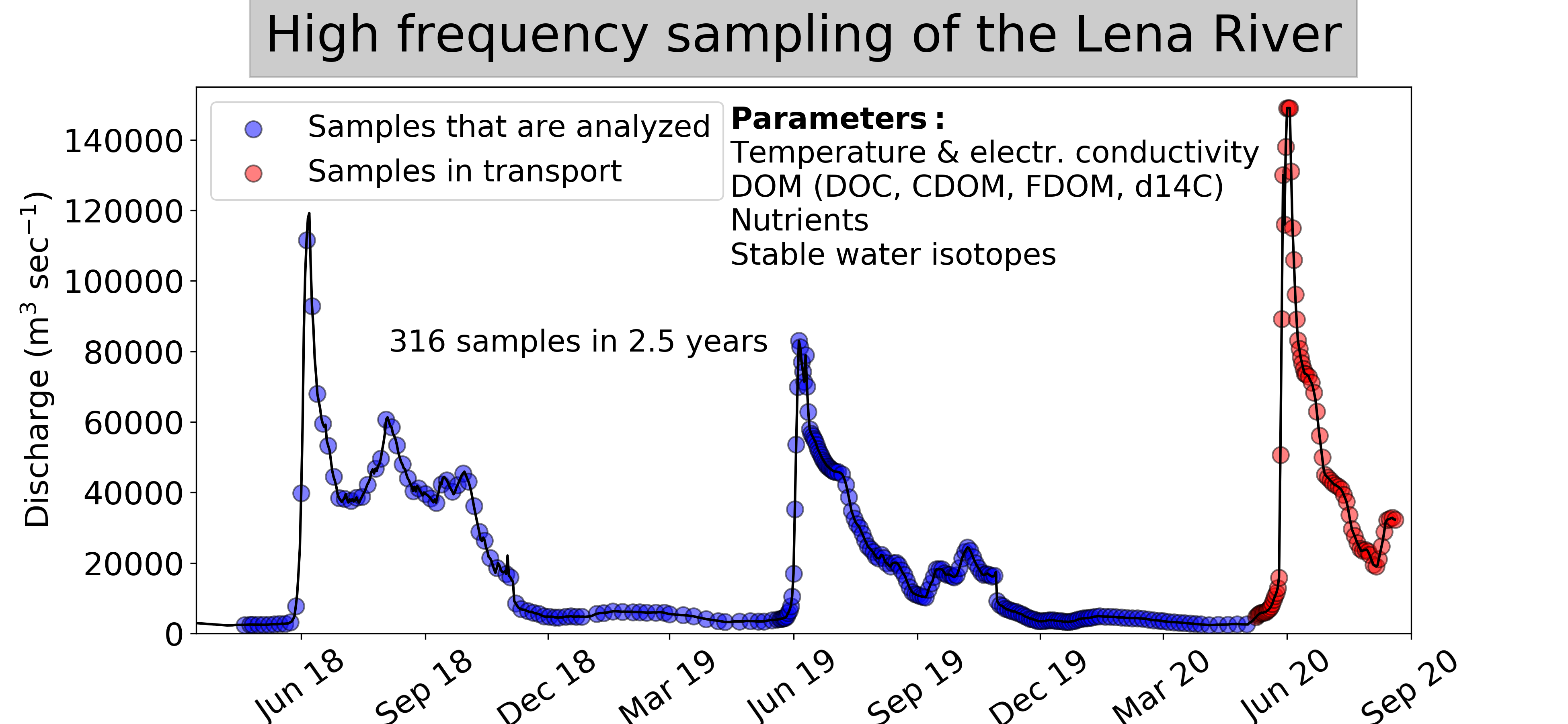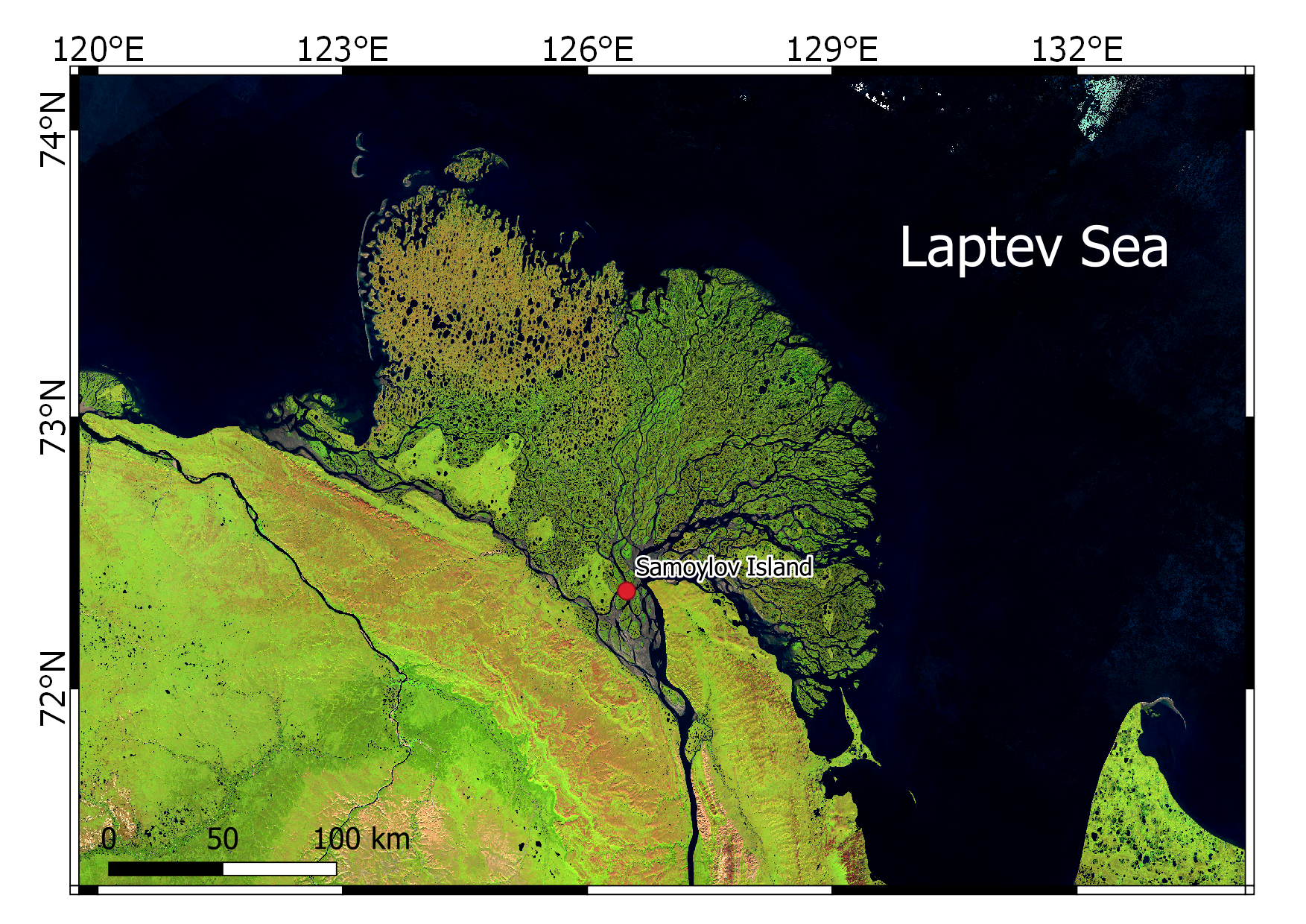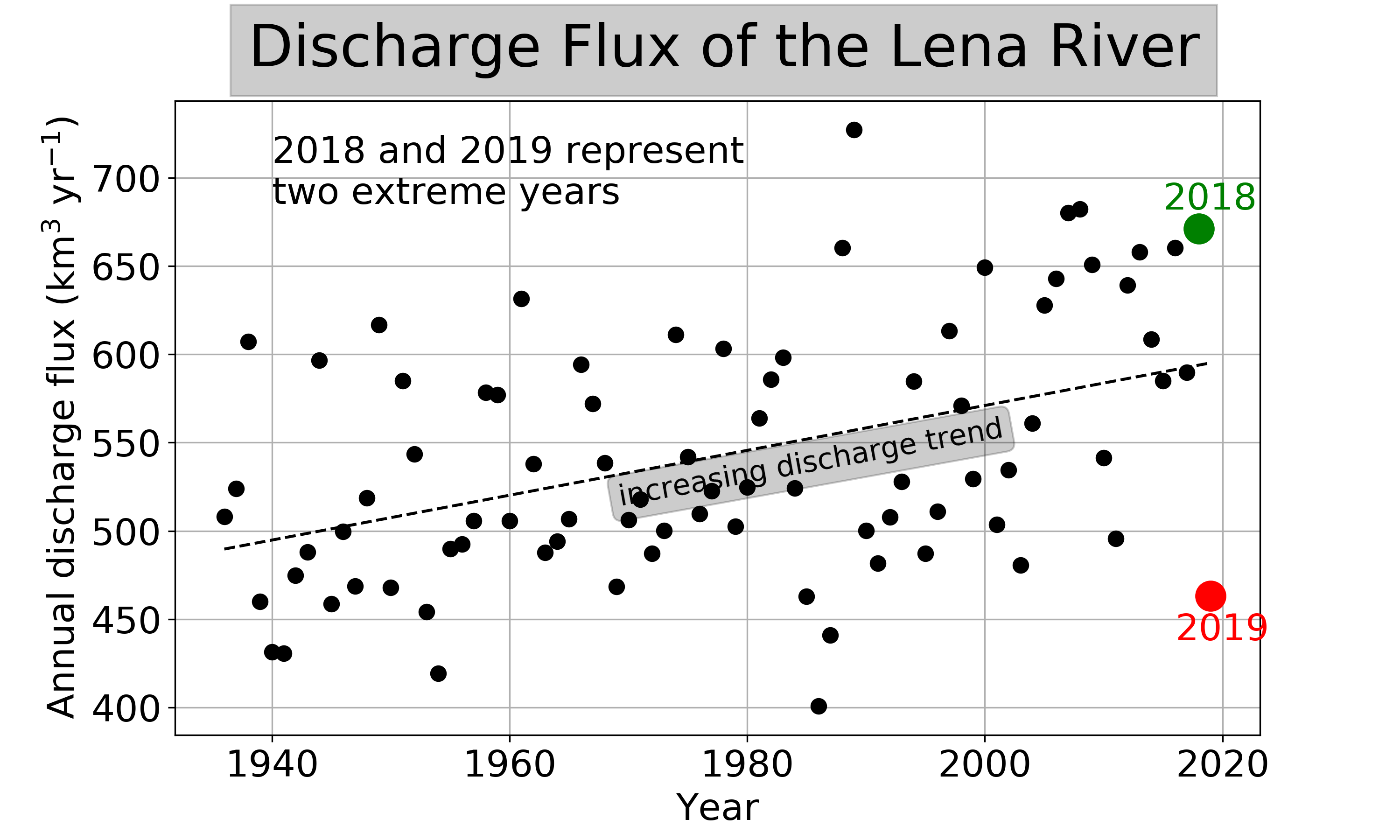In spring 2018, we began sampling the Lena River at Samoylov Island in the central Lena River Delta. We aimed it to become a long-term data set tracking changing fluxes from the Siberian land mass to the Arctic Ocean. The Research Station Samoylov Island is a partner in the sampling program and offers a unique chance for frequent year-round sampling. Since April 2018, two members of the station staff have taken and processed samples every 1 to 7 days. The samples are then analyzed at the Otto Schmidt Laboratory in St. Petersburg and the AWI in Potsdam for water quality parameters, but are also being studied by other partners in Denmark and Belgium.

We are extremely happy that we could keep this sampling program alive during the past year, when most field work was unfortunately cancelled or postponed due to the COVID19 pandemic. The hope for a long-term data set continues.

The first two years of samples have been analyzed. These two years had very extreme discharge levels: very high in 2018 and very low in 2019. We can now compare how hydrological regime affects the biogeochemistry and carbon export to the Arctic Ocean and what role permafrost thaw plays.
The results may allow us to predict how the organic carbon export of the Lena River changes as the climate continues to warm.

Above figure depicts Annual discharge flux between 1936 and 2019, Data from Shiklomanov et al. (2020) Arctic Great Rivers Observatory (https://www.arcticrivers.org/data)
This year showed us again that climate change is most dramatic in Siberia and that the Lena River catchment is heavily affected. This year’s extremely high air temperatures are also reflected in significantly warmer Lena River water. Our sampling program is important to establish a baseline as these changes begin to take hold and as fluxes to the Arctic Ocean are affected.


